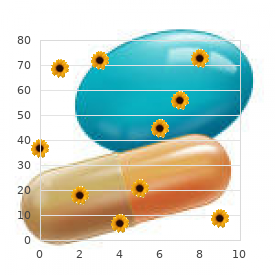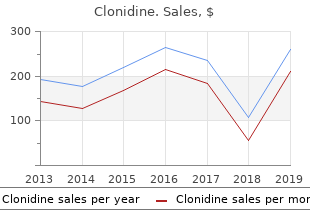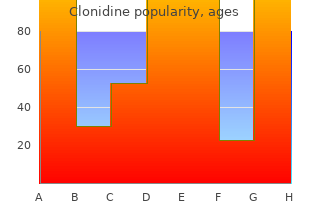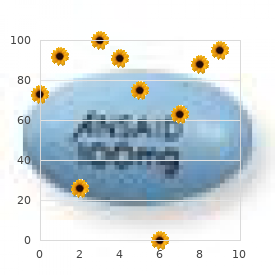Clonidine
"Cheap 0.1mg clonidine otc, prehypertension high blood pressure."
By: Randolph E. Regal, BS, PharmD
- Clinical Associate Professor, Department of Clinical Pharmacy, College of Pharmacy, University of Michigan
- Clinical Pharmacist, University of Michigan Health System, Ann Arbor, Michigan

https://pharmacy.umich.edu/people/reregal
Conservative Care with repeated ultrasound surveillance so that any recurrent As with aortoiliac disease arrhythmia research summit cheap clonidine 0.1mg online, risk factor reduction blood pressure chart philippines clonidine 0.1 mg without a prescription, medical narrowing can be treated promptly to arteria dawson purchase clonidine with a visa prevent complete optimization arrhythmia recognition posters purchase clonidine 0.1mg free shipping, and exercise treatment are the cornerstone of occlusion. Revascularization is reserved for patients who femoral artery, superficial femoral artery, and popliteal remain signifcantly disabled after failure of this conserva? artery is 65-70% at 3 years, whereas the patency of angio? tive regimen. Surgical Intervention ing associated coronary lesions, 5-year mortality among patients with lower extremity disease can be as high as 1. Bypass surgery-Intervention is indicated ifclaudication 50%, particularly with involvement of the infrapopliteal is progressive, incapacitating, or interferes signifcantly with vessels. However, with aggressive risk factor modifcation, essential daily activities or employment. When to Refer the superfcial femoral artery is a femoral-popliteal bypass with autogenous saphenous vein. Endovascular surgery-Endovascular techniques are often used for lesions of the superficial femoral artery. Results for primary bypass versus primary dent rubor may be prominent with pallor on elevation. The angioplasty/stent for intermittent claudication due to superfi? skin of the fo ot is generally cool, atrophic, and hairless. Imaging Digital subtraction angiography is the gold standard method to delineate the anatomy ofthe tibial-popliteal seg. However, if ulcerations appear and there is no significant healing Occlusive processes of the tibial arteries of the lower leg within 2-3 weeks and studies indicate poor blood flow, and pedal arteries in the foot occur primarily in patients revascularization will be required. There often is extensive calcification of the infrequent rest pain without ulceration is not an indication artery wall. The first manifesta? with monophasic waveforms requires revascularization to tion of ischemia is frequently an ulcer or gangrene rather prevent threatened tissue loss. Symptoms and Signs been shown to be an effective mechanism to treat rest pain and heal gangrene or ischemic ulcerations of the foot. Unless there are associated lesions in the aortoiliac or Because the foot often has relative sparing of vascular dis? femoral/superficial femoral artery segments, claudication ease, these byasses have had adequate patency rates (70% may not occur. Fortunately, in nearly all series, limb salvage be supplied from collateral vessels from the popliteal rates are much higher than patency rates. Drug-coated balloons have not been successfl cation, and rest pain or ulceration may be the first sign of in the tibial vessels. The presence of rest pain or ated with the best success when used in short lesions. Amputation emic rest pain is confined to the dorsum of the foot and is relieved with dependency; the pain does not occur with Patients with rest pain and tissue loss are at high risk for standing or sitting. It is severe and burning in character, amputation, particularly if revascularization cannot be and because it is only present when recumbent, it may done. If the pain is relieved by simply dangling the foot over Many patients who have below-the-knee or above-the? the edge of the bed, which increases blood fow to the fo ot, knee amputations due to vascular insufficiency never then the pain is due to vascular insufficiency. Leg night attain independent ambulatory status and often need cramps (not related to ischemia) occur often in patients assisted-living facilities. Complications circulation, and the remainder to the upper extremities and mesenteric and renal circulation. Atrial fbrillation is the most the complications of intervention are similar to those common cause of cardiac thrombus formation; other causes listed for superfcial femoral artery disease with evidence are valvular disease or thrombus formation on the ventricular that the overall cardiovascular risk ofintervention increases surface of a large anterior myocardial infarct. The patients with critical limb isch? Emboli from arterial sources such as arterial ulcerations emia require aggressive risk factor modifcation. Wound or calcified excrescences are usually small and go to the infection rates after bypass are higher if there is an open distal arterial tree (toes). If the stenosis has developed over time, collateral blood ves? Patients with tibial atherosclerosis have extensive athero? sels will develop, and the resulting occlusion may only sclerotic burden and a high prevalence of diabetes. Symptoms and Signs Patients with diabetes and foot ulcers should be referred the sudden onset ofextremity pain, with loss or reduction in for a formal vascular evaluation. This often will necessary but the severity of the disease will be quantified, be accompanied by neurologic dysfnction, such as numb? which has implications for future symptom development. With popliteal occlusion, Any patient with a diabetic foot infection should be treated symptoms may only affect the foot. Signs of severe arterial spectrum antibiotics should be given to cover gram-positive, ischemia include pallor, coolness of the extremity, and mot? gram-negative, and anaerobic organisms. Impaired neurologic fnction progressing to anesthesia a multidisciplinary limb preservation center staffed with accompanied with paralysis suggests a poor prognosis. There will belittle or no fowfound with Doppler examina? tion of the distal vessels. A systematic review of the effectiveness of abrupt cutoff of contrast with embolic occlusion. Blood revascularization of the ulcerated foot in patients with diabe? workmay show myoglobin and metabolic acidosis. Evidence of neurologic injury, including loss of light touch sensation, indicates that collateral fow is inadequate to maintain limb viability and? Heparin As soon as the diagnosis is made, unfractionated heparin should be administered (5000-10,000 units) intravenously. This helps pre? occlude proximal arteries in the lower extremities are almost vent clot propagation and may also help relieve associated always from the heart. Anticoagulation may improve symptoms, but go to the lower extremities, 20% to the cerebrovascular revascularization will still be required. One-third ofalischemic strokes may be due cations such as bleeding diathesis, gastrointestinal to arterial emboli. In the absence of atrial fbrillation, bleeding, intracranial trauma, or neurosurgery within the approximately 90% ofthese emboli originate from the proxi? past 3 months. Intracranial atherosclerotic lesions are less during the thrombolytic procedure to assess for improved uncommon in the West but are the most common location vascular perfusion and to guard against the development of of cerebrovascular disease in China. In mon lesions are in the cortex with both motor and sensory extreme cases, it may be necessary to perform thrombo? involvement. Emboli to the retinal artery cause unilateral embolectomy from the femoral, popliteal and even the blindness, which, when transient, is termed "amaurosis pedal vessels to revascularize the limb. Complications Signs of cerebrovascular disease include carotid artery Complications of revascularization of an acutely ischemic bruits. However, there is poor correlation between the degree limb can include severe metabolic acidosis, hyperkalemia, of stenosis and the presence of the bruit. In cases where several hours have absence of a bruit does not exclude the possibility of carotid elapsed but recovery of viable tissue may still be possible, stenosis. Nonfocal symptoms, such as dizziness and unsteadi? signifcant levels oflactic acid, potassium, and other harm? ness, seldom are related to cerebrovascular atherosclerosis. Pretreatment of the patient with sodium bicarbonate prior to reestablishing arterial flow is required. Duplex ultrasonography is the imaging modality of choice Surgery in the presence ofthrombolytic agents and heparin with high specificity and sensitivity for detecting and grad? carries a high risk ofpostoperative wound hematoma. Mild to moder? There is a 10-25% risk of amputation with an acute arterial ate disease (30-50% stenosis) indicates the need for ongo? ing surveillance and aggressive risk factor modification. Prognosis for acute thrombotic occlusion of an Excellent depiction of the fll anatomy of the cerebrovas? cular circulation from arch to cranium can be obtained atherosclerotic segment is generally better because the col? lateral fow can maintain extremity viability. Treatment See Chapter 24 for a discussion of the medical manage? ment of occlusive cerebrovascular disease. Sudden onset of weakness and numbness of an extremity, aphasia, dysarthria, or unilateral blind? A. Results that with no neurologic symptoms but with carotid stenosis on do not match these guidelines will jeopardize the therapeu? imaging will beneft from carotid intervention if they are tic benefit ofcarotid intervention. In symptomatic patients, considered to be at low risk for intervention and their intervention should be planned as soon as possible. There is also thought to have an unstable plaque and are at particularly the risk of postoperative neck hematoma, which can cause high risk for embolic stroke. International Carotid Stenting Study showed increased stroke rates with carotid angioplasty and stenting in symp. In cases of restenosis after previous carotid Heart Association has recommended upper limits of intervention, carotid angioplasty and stenting is an excel? acceptable combined morbidity and mortality for these lent choice since the risk ofembolization is low and the risk interventions: 3% for asymptomatic, 5% for those with of cranial nerve injury with surgery is high.


Tumorigenicity of 6-halogenated derivatives of benzo[a]pyrene in mouse skin and rat mammary gland blood pressure 5 year old boy purchase generic clonidine canada. Comparative dose-response tumorigenicity studies of dibenzo(a)pyrene versus 7 blood pressure 7949 purchase 0.1 mg clonidine overnight delivery,12-dimethylbenz(a)anthracene arrhythmia 16 year old discount clonidine online american express, benzo(a)pyrene and two dibenzo(a)pyrene dihydrodiols in mouse skin and rat mammary gland heart attack by one direction order clonidine cheap online. Microbial degradation of polycyclic aromatic hydrocarbons in the aquatic environment. Effects of synthetic and naturally occurring flavonoids on metabolic activation of benzo[a]pyrene in hamster embryo cell cultures. Effect of benzo(a)pyrene and methyl(acetoxymethyl)nitrosamine on thymidine uptake and induction of aryl hydrocarbon hydroxylase activity in human fetal oesophageal cells in culture. Synergistic activity of polynuclear aromatic hydrocarbon mixtures as aryl hydrocarbon (Ah) receptor agonists. The fecal excretion of polycyclic hydrocarbons following their administration to the rat. Tumorigenicity of the diastereomeric bay-region benzo(e)pyrene 9,10-diol-11,12-epoxides in newborn mice. Mutagenicity of chrysene, its methyl and benzo derivatives, and their interactions with cytochromes P-450 and the Ah-receptor; relevance to their carcinogenic potency. Induction of mammary cytochromes P-450: An essential first step in the metabolism of 7,12-dimethylbenz[a]anthracene by rat mammary epithelial cells. An inhibitory effect of vitamin A on the induction of tumors in the forestomach and cervix in the Syrian hamster by carcinogenic polycyclic hydrocarbons. Polycyclic aromatic hydrocarbons and their derivatives in indoor and outdoor air in an eight-home study. Biogical monitoring of human exposure to coal tar urinary mutagenicity assays and analytical determination of polycyclic aromatic hydrocarbon: Metabolites in urine. Urinary mutagenicity assays and analytical determination of polycyclic aromatic hydrocarbon metabolites in urine. Determination of polycyclic aromatic hydrocarbons in natural waters by thin-layer chromatography and high-performance liquid chromatography. Benzo(a)pyren-3-yl hydrogen sulfate, a major ethyl acetate-extractable metabolite of B(a)P in human, hamster and rat lung cultures. Preliminary findings of the priority pollutant monitoring project of the nationwide urban runoff program journal. Evaluation of the mutagenicity of compounds of known carcinogenicity, belonging to the benz(a)anthracene, chrysene, and cyclopenta(a)phenanthrene series, using Ames? tests. Benzpyrene exposure at 15 days of prenatal life reduces the binding capacity of thymic glucocorticoid receptors in adulthood. Lasting impact of a single benzpyrene treatment in pre-natal and growing age on the thymic glucocorticoid receptors of rats. Metabolism of benzo(a)pyrene on the nasal mucosa of Syrian hamsters: Comparison to by other extrahepatic tissues and possible role of nasally produced metabolites in carcinogenesis. Application of two-step laser mass spectrometry to the analysis of polynuclear aromatic hydrocarbons in contaminated soils. Long-term low-dose benzo-alpha-pyrene-induced mutation in human lymphoblasts competent in xenobiotic metabolism. High-speed supercritical fluid extraction method for routine measurement of polycyclic aromatic hydrocarbons in environmental soils with dichloromethane as a static modifier. Complex mixture effects on the dermal absorption of benzo[a]pyrene and other polycyclic aromatic hydrocarbons from mouse skin. Hitherto unknown additive growth effects of fluorene and 2-acetylaminofluorene on bile duct epithelium and hepatocytes in rats. Alteration of brain catecholamines during growth of benzo(a)pyrene induced murine fibrosarcoma. Response of rat lung to 3,4-benzpyrene administered by intratracheal instillation in infusine with or without carbon black. Toxicity of saline and organic solvent extracts of sediments from Boston Harbor, Massachusetts and the Hudson River-Raritan Bay Estuary, New York using the Microtox bioassay. Determination of polycyclic aromatic hydrocarbons in biomass gasifier effluents with liquid chromatography-diode array spectroscopy. Experimental studies in rat lungs on the carcinogenicity and dose-response relationships of eight frequently occurring environmental polycyclic aromatic hydrocarbons. Anticarcinogenic and cocarcinogenic effects of benzo[e]pyrene and dibenz[u,c]anthracene on skin tumor initiation by polycyclic hydrocarbons. In vitro transformation-Interaction of chemical carcinogens with viruses and physical agents. Transformation of hamster cells in vitro by polycyclic hydrocarbons without cytotoxicity. The carcinogenic potential of twelve refined mineral oils following long-term topical application. Benzo[a]pyrene metabolism and induction of enzyme-altered foci in regenerating rat liver. Evaluation of occupational exposure to mixed dusts and polycyclic aromatic hydrocarbons in silicon carbide plants. An alternative isolation procedure for the subsequent determination of benzo(a)pyrene in total particulate matter of cigarette smoke. Metabolism and macromolecular binding of dibenz(a,c)anthracene and dibenz(a,h)anthracene by mouse embryo cells in culture. Comparative neoplastic transformation responses of Balb 3T3 cells, Syrian hamster embryo cells, and Rauscher mm-me leukemia virus-infected Fischer 344 rat embryo cells to chemical carcinogens. Tests with Salmonella typhimurium and Escherichia coli using a standardized protocol. Analysis of polycyclic aromatic hydrocarbons in diesel emissions using high performance liquid chromatography: A methods development study. Polycyclic aromatic hydrocarbon hazards to fish, wildlife, and invertebretes: a synoptic review. Polycyclic aromatic hydrocarbon hazards to fish, wildlife, and invertebrates: A synoptic review. Bioconcentration of polycyclic aromatic hydrocarbons in a nearshore estuarine environment near a Pensacola, Florida creosote contamination site. Growth kinetics of the mouse epidermis after a single application of 3,4? benzpyrene, croton oil, or 1,2-benzpyrene. Predispostion of cloned fetal hamster lung epithelial cells to transformation by a precarcinogen, benzo(a)pyrene, using growth hormone supplementation and collagengel substratum. Sensitivity of Syrian golden hamster fetal lung cells to benzo(a)pyrene and other polycyclic hydrocarbons in vitro. Environment Canada, Department of Fisheries and Oceans, Health and Welfare Canada. Environmental Protection Agency, Office of Health and Environmental Assessment, Environmental Criteria and Assessment Office. Recommendations for and documentation of biological values for use in risk assessment. Provisional guidance for quantitative risk assessment of polycyclic aromatic hydrocarbons. Studies of chemopreventative effects of myo-inositol on benzo[a]pyrene-induced neoplasia of the lung and forestomach of female A/J mice. Relationships of polycyclic aromatic hydrocarbon yields with particulate matter (water and nicotine free) yields in mainstream and sidestream cigerette smoke. Identification and characterization of a specific autoantiphosphatidylinositol immune response during the time course of benzo(a)pyrene-induced malignant tumors in female Sprague-Dawley rats. Inhibition of carcinogenesis: the effects of polycyclic hydrocarbons and related compounds. Respiratory tract tumors in hamsters after intratracheal instillations of benzo[a]pyrene alone and with furfural. Dose-response correlation for the induction of respiratory-tract tumors in Syrian golden hamsters by intratracheal instillations of benzo[a]pyrene. Effects of exposure to furfural vapor in hamsters simultaneously treated with benzo[a]pyrene and diethylnitrosamine.

Specialty referral should be sought early both that it has a definite erythematous component blood pressure guidelines 2015 cheap 0.1 mg clonidine. Oral Lichen Planus-Most commonlypresents as nation-including the lateral tongue arrhythmia dance company buy discount clonidine 0.1 mg on line, floor of the mouth blood pressure medication how it works clonidine 0.1mg fast delivery, lacy leukoplakia but may be erosive; definitive gingiva prehypertension diet cheap clonidine online, buccal area, palate, and tonsillar fossae-and pal? diagnosis requires biopsy. To date, there are no irritation (eg, from dentures, tobacco, lichen planus); approved therapies for reversing or stabilizing leukoplakia about 2-6%, however, represent either dysplasia or early or erythroplakia. For example, the reticular pattern may mimic candidiasis or hyerkeratosis, while the erosive pattern may mimic squamous cell carci? noma. Exfoliative cytology or a small incisional or excisional biopsy is indicated, especially if squamous cell carcinoma is suspected. Many think there is a low rate (l %) of squamous cell carcinoma arising within lichen planus (in addition to the possibility of clinical misdiagnosis). Leukoplakia with moderate dysplasia on slightly raised leukoplakic areas with a corrugated or the lateral border of the tongue. They also seem to reduce the incidence of second primary cancers in head and neck and lung cancer patients previously treated for a primary cancer. Systemic or local immunosuppression, such as recent corticosteroid, chemotherapy, orantibiotic use. Erythema of the oral cavity or oropharynx with to successful management (Figure 8-5). Rapid resolution of symptoms with appropriate patients in whom the tumor is detected before it is 2 em in treatment. Radiation is an alter? native but not generally used as first-line therapy for small lesions. Clinical Findings tion of resection, neck dissection, and external beam radia? tion. Symptoms and Signs resection and can involve the use ofmyocutaneous faps or Oral candidiasis (thrush) is usually painful and looks like vascularized free faps with or without bone. Oral candidiasis is commonly associated with the following risk factors: (1) use of den? tures, (2) debilitated state with poor oral hygiene, (3) dia? betes, (4) anemia, (5) chemotherapy or local irradiation, and (6) corticosteroid use (oral or systemic) or broad? spectrum antibiotics. Angular cheilitis is another manifes? tation of candidiasis, although it is also seen in nutritional deficiencies (Figure 8-6). Diagnostic Studies the burning mouth syndrome typically has no identifable associated risk factors and seems to be most common in the diagnosis is made clinically. Treating possible underlying potassium hydroxide will reveal spores and may show non? causes, changing long-term medications to alternative septate mycelia. Biopsy will show intraepithelial pseudo? ones, and smoking cessation may resolve symptoms of mycelia of Candida albicans. Effective treatments with no known predisposing cause for Candida over? for the burning mouth syndrome include alpha-lipoic acid growth (see also Chapter 31). Clonazepam is most effective as a rapid? Health Services Clinical Practice Guideline for Evaluation dissolving tablet placed on the tongue in doses from 0. Behavioral therapy has also examination of the oral mucosa with each clinician visit as been shown to be effective. Burning mouth syndrome and secondary oral acidic gastric environment for absorption] for 7-14 days), burning. Necrotizing Ulcerative Gingivitis (Trench and oral itraconazole (200 mg/day) may be indicated in Mouth, Vincent Angina) fuconazole-refractory cases. Many of the Candida species Necrotizing ulcerative gingivitis, often caused byan infec? in these patients are resistant to first-line azoles and may tion ofboth spirochetes and fusiform bacilli, is common in require newer drugs, such as voriconazole. Underlying systemic diseases may also pre? mouth rinses may provide local relief Nystatin powder dispose to this disorder. Clinically, there is painful acute (100,000 units/g) applied to dentures three or four times gingival infammation and necrosis, often with bleeding, daily and rinsed off for several weeks may help denture halitosis, fever, and cervical lymphadenopathy. Infammation ofthe tongue with loss offliform papillae Their cause remains uncertain, although an association leads to a red, smooth-surfaced tongue (glossitis). Found on painful, it may be secondary to nutritional defciencies freely moving, nonkeratinized mucosa (eg, buccal and (eg, niacin, ribofavin, iron, or vitamin E), drug reactions, labial mucosa and not attached gingiva or palate), they may dehydration, irritants, or foods and liquids, and possibly to be single or multiple, are usually recurrent, and appear as autoimmune reactions or psoriasis. If the primary cause painful small round ulcerations with yellow-gray fibrinoid cannot be identified and corrected, empiric nutritional centers surrounded by red halos (Figure 8-7). In the absence of any 1 em in diameter and can be disabling due to the degree of clinical findings, it has been termed "burning mouth associated oral pain. A study with diabetes mellitus, drugs (eg, diuretics), tobacco, found that the frequency of viral rhinitis and bedtime after xerostomia, and candidiasis as well as the listed causes 11 pm were independent predictors of aphthous ulcer fre? of glossitis. Clinically, there is initial burning, followed by typical small vesicles that rupture and form scabs. Lesions are most commonly found on the attached gingiva and mucocuta? neous junction of the lip, but lesions can also form on the tongue, buccal mucosa, and soft palate. Acyclovir (200-800 mg orally five times daily for 7 -l0 days) or valacyclovir (1000 mg orally twice daily for 7-10 days) may shorten the course and reduce postherpetic pain. These treatments may be effective only when started within 24-48 hours of the onset of initial symptoms (pain, itching, burning) and are not effective once vesicles have erupted. Differential diagnosis includes aphthous stomatitis, erythema multi? forme, syphilitic chancre, and carcinoma. Coxsackievirus? caused lesions (grayish-white tonsillar plaques and palatal ulcers of herpangina or buccal and lip ulcers in hand-foot? and-mouth disease) are seen more commonly in children under age 6. A l-week tapering course ofprednisone (40-60 mg/day) coccus infection to prevent rheumatic sequelae. Pharyngitis andtonsillitis account for over 10% of all office Large or persistent areas of ulcerative stomatitis may be visits to primary care clinicians and 50% of outpatient anti? secondary to erythema multiforme or drug allergies, acute biotic use. When the diagno? public health policy concern is reducing the extraordinary sis is not clear, incisional biopsy is indicated. Effect ofbedtime on recurrent aphthous stomatitis in alone a sufficient basis for decisions about which patients college students. Herpes Stomatitis Numerous well-done studies and experience with rapid Herpes gingivostomatitis is common, mild, andshort-lived laboratory tests for detection of streptococci (eliminating and requires no intervention in most adults. In immuno? the delay caused by culturing) informed a consensus compromised persons, however, reactivation of herpes experience. However, about one-third of patients with infectious mononucleosis have secondary streptococcal tonsillitis, requiring treatment. Ampicillin should routinely be avoided if mononucleosis is suspected because it induces a rash that might be misinterpreted by the patient as a penicillin allergy. Diphtheria (extremely rare but described in the alcoholic population) presents with low-grade fever and an illpatient with a graytonsillar pseudomembrane. The ColorAtlas of Rhinorrhea and lack of exudate would suggest a virus, but Family Medicine. Clinical Findings anaerobic streptococci, and Corynebacterium haemolyticum (which responds better to erythromycin than penicillin) may A. Laboratory Findings nopathy, lack of a cough, and a pharyngotonsillar exudate (Figures 8-8 and 8-9). Sore throat may be severe, with odyno? phagia, tender adenopathy, and a scarlatiniform rash. Hoarseness, cough, and coryza are not suggestive of this Given the availability of many well-documented studies in disease. Evidence-based evaluation and management once, was the standard antibiotic treatment. Peri? lin V potassium (250 mg orally three times daily or 500 mg tonsillar abscess (quinsy) and cellulitis present with severe twice daily for 10 days) or cefuroxime axetil (250 mg orally sore throat, odynophagia, trismus, medial deviation of the twice daily for 5-10 days) are both effective. The efcacy of soft palate and peritonsillar fold, and an abnormal mufed a 5-day regimen of penicillin V potassium appears to be ("hot potato") voice. Following therapy, peritonsillar celluli? similar to that of a 10-day course, with a 94% clinical this usually either resolves over several days or evolves into response rate and an 84% streptococcal eradication rate. The existence of an abscess may be Erythromycin (also active against My coplasma and confrmed by aspirating pus from the peritonsillar fold just Chlamydia) is a reasonable alternative to penicillin in aller? superior and medial to the upper pole of the tonsil. Cephalosporins are somewhat more effective 19-gauge or 21-gauge needle should be passed medial to the than penicillin in producing bacteriologic cures; 5-day molar and no deeper than 1 em, because the internal carotid administration has been successful for cefpodoxime and artery may lie more medially than its usual location and cefuroxime. The macrolide antibiotics have also been pass posterior and deep to the tonsillar fossa. Less severe cases and patients who are tococcal complications of scarlet fever, glomerulonephritis, able to tolerate oral intake may be treated for 7-10days with rheumatic myocarditis, and local abscess formation. Surprisingly, penicillin-tolerant strains are clindamycin, 300 mg four times daily. Although antibiotic not isolated more frequently in those who fail treatment treatment is generally undisputed, there is controversy than in those treated successfully with penicillin.
Buy generic clonidine 0.1mg on line. How to lower blood pressure quickly and naturally By Salt ll How To Control Blood Presure.




